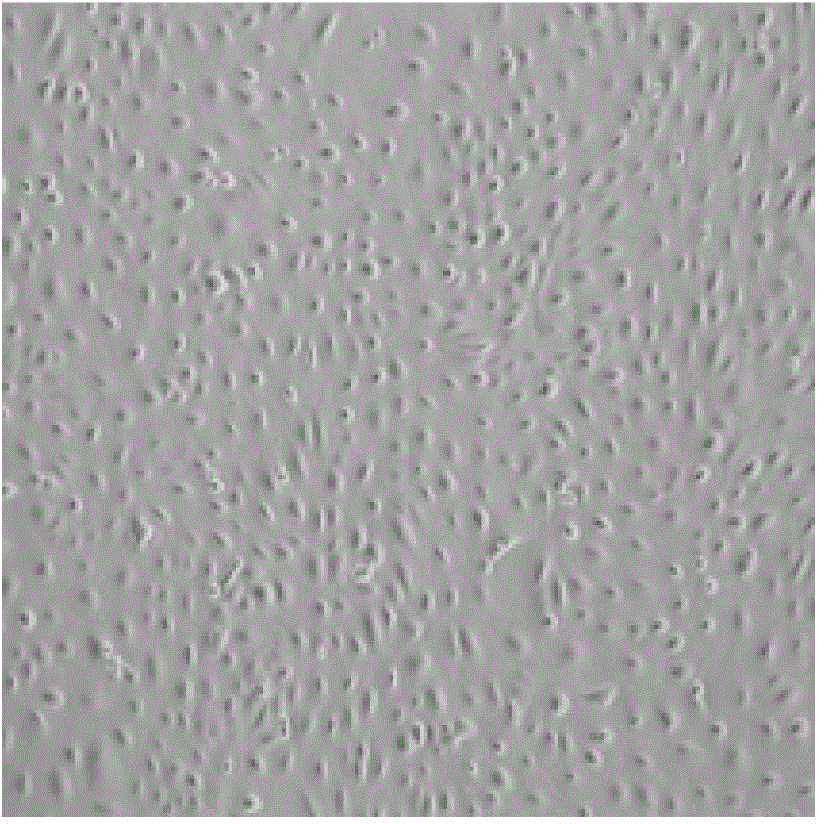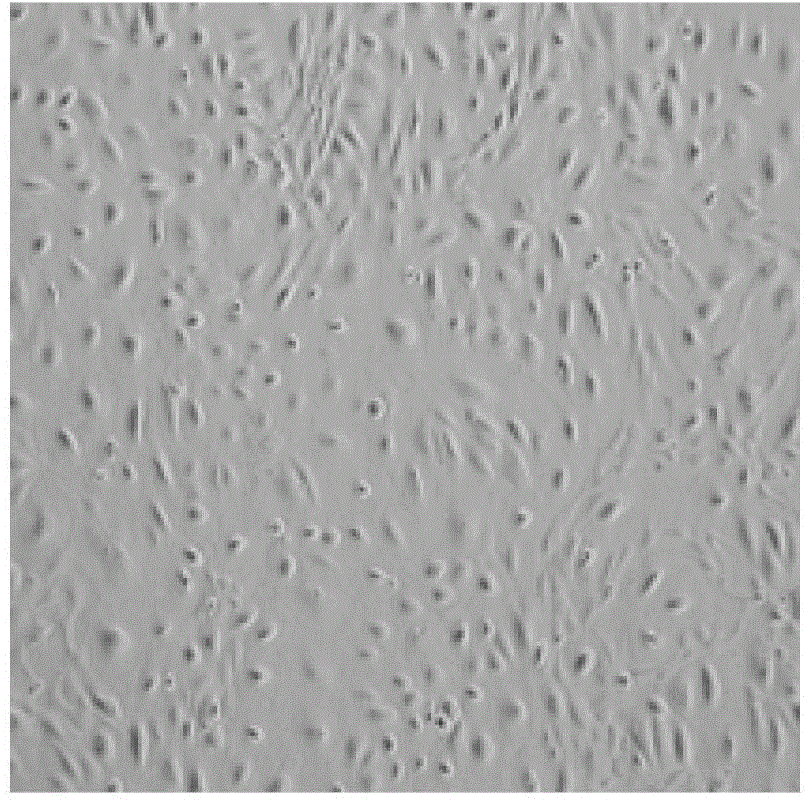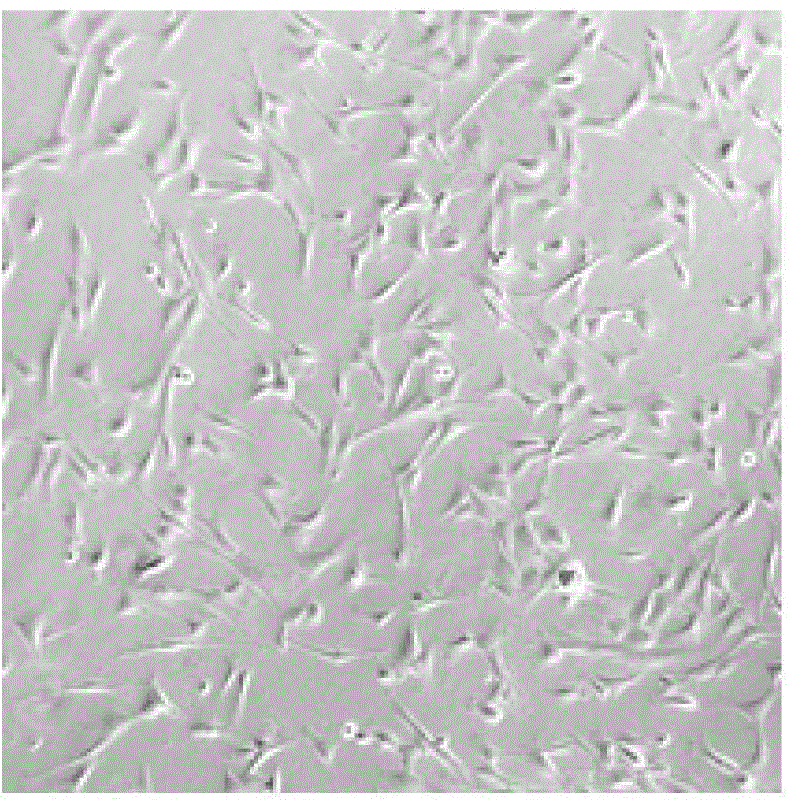Amnion epithelial cell separation and culture method
A technology of amniotic membrane epithelial cells and amniotic membrane, applied in the field of culture and separation of amniotic membrane epithelial cells, can solve the problems of low purity of amniotic membrane epithelial cells, and achieve the effect of avoiding the reduction of cell adhesion rate, promoting separation and reducing pollution
- Summary
- Abstract
- Description
- Claims
- Application Information
AI Technical Summary
Problems solved by technology
Method used
Image
Examples
specific Embodiment approach 1
[0023] Specific embodiment 1: This embodiment is a method for separating and culturing amniotic membrane epithelial cells, which is completed according to the following steps:
[0024] 1. Amniotic membrane tissue separation and disinfection: the amniotic membrane is stripped from the placenta, then washed with saline for 2 to 3 times, and then immersed in saline containing 1% to 3% cefoperazone for 3 to 10 minutes;
[0025] 2. Separation of amniotic membrane epithelial cells: cut the amniotic membrane into 50~150cm 2 Then apply the cut amniotic membrane with the epithelial side up on the sterile nitrocellulose membrane, add 3-10 mL of normal saline to Petri dish A, and then place the amniotic membrane with the epithelial side down on the petri dish In A, let stand for 2~3min to obtain the amniotic membrane patch; place the amniotic membrane patch in petri dish B, add 10-30ml of pancreatin-EDTA with a mass concentration of 0.25% for digestion for 15-20min, and then seal with the para...
specific Embodiment approach 2
[0031] Specific embodiment two: This embodiment is different from specific embodiment one in that the peeling method described in step one is blunt peeling. The other steps and parameters are the same as in the first embodiment.
specific Embodiment approach 3
[0032] Specific embodiment three: This embodiment is different from specific embodiment one or two in that the petri dish A, petri dish B, and petri dish C described in step 2 are petri dishes with a diameter of 9-15 cm. The other steps and parameters are the same as in the first or second embodiment.
PUM
| Property | Measurement | Unit |
|---|---|---|
| diameter | aaaaa | aaaaa |
Abstract
Description
Claims
Application Information
 Login to View More
Login to View More - Generate Ideas
- Intellectual Property
- Life Sciences
- Materials
- Tech Scout
- Unparalleled Data Quality
- Higher Quality Content
- 60% Fewer Hallucinations
Browse by: Latest US Patents, China's latest patents, Technical Efficacy Thesaurus, Application Domain, Technology Topic, Popular Technical Reports.
© 2025 PatSnap. All rights reserved.Legal|Privacy policy|Modern Slavery Act Transparency Statement|Sitemap|About US| Contact US: help@patsnap.com



